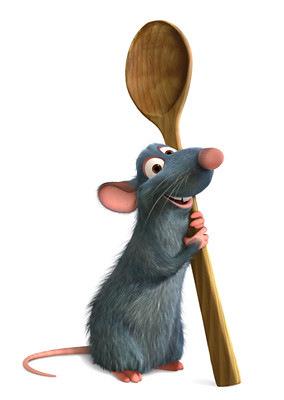For those interested, I recently survived a rather severe bout of CID (Creative Idea Deprivation). I was living in a vacuum with no new ideas bubbling up to the surface. Luckily, I escaped this soulless state of mind with a little inspiration from an excellent friend of mine, Stephanie. She sent me a text message bragging about her recent dry run at making cake pops. For anyone who has not noticed this most recent trend that has swept blogs worldwide, you can think of a "cake pop" as "cake-on-a-stick".
When Steph told me about her adorable Hello-Kitty inspired cake pops, I knew I had to try making the bad boys. For anyone curious about where to get the goods this week, I bought everything at Walmart in a 10-minute raid on the store after class. (And I spent under $10, SCORE!)
Naturally, working on this most recent subversion of traditional cake whetted my appetite for a little bit of historical perspective. (Yes, that was a Ratatouille allusion, for my fellow Disney-Addicts.) It turns out that if your old cake recipe feels like it has been in the family since the dawn of time, it might have been!
The ancient world possessed many “cake” recipes scattered throughout time. The Ancient Egyptians were the first to demonstrate provable baking abilities. Their closest cake concoction consisted of fluffy bread sweetened with honey. The Ancient Greeks, always ones to out-do the neighbors, cooked up a cheesecake recipe that bears remarkable resemblance to modern versions. The dreaded holiday-brick, the fruitcake, came from the Romans. They also came up with the tradition of wedding cakes. However, in Ancient Rome, a groom would smash a barley cake over the bride’s head. (If you’ve ever tasted a barley cake, you’d understand.) Britain during the 3rd -5th centuries had pastry delicacies calling for obscure ingredients such as lambs’ testicles, oysters, and coxcombs. (I'll pass on those aphrodisiacs . . .) Over the next several centuries the recipes evolved as sugars and honeys became more readily available. By the 14th century, Chaucer recorded huge cakes constructed for special celebrations. Brides would have these delicacies, or smaller bun versions, at their weddings to ensure a productive and prosperous future.
Cake was always a European dessert, though it became more prevalent in English-speaking countries. The word “cake” is a derivative of “kaka,” an Old Norse word. The European, and heavier, versions of cake are torte and gateau. These center more on the richer ingredients such as butter, eggs, and chocolate. The tradition of baking cakes is still especially prevalent in North America.
During the 1950’s the ability to bake a cake was a basic survival tool for a housewife. ‘Nowadays’ the old cake standbys sometimes seem a tinge worn-out. To create a modern, yet delicious, spin on the old favorites, check out my basic recipe for cake pops below.
Not too shabby for my first time, no?
What shape do you think I should try next time?








